America's National Treasures Blu-ray Movie
HomeAmerica's National Treasures Blu-ray Movie 
Mill Creek Entertainment | 2010 | 420 min | Not rated | Sep 14, 2010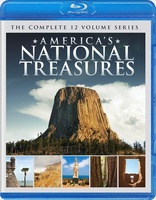
Movie rating
6.6 | / 10 |
Blu-ray rating
| Users | 2.5 | |
| Reviewer | 2.5 | |
| Overall | 2.5 |
Overview
America's National Treasures (2010)
In 1906 Teddy Roosevelt created the nation s first national monument destination. The purpose was to preserve all of America s significant pieces of history. Since then, all National Monuments have been designated by Presidents as their personal memorials which they sought to protect above all others. America s National Treasures tells the story of America s past and present glory. This 12 volume set takes a journey through the Ecology, Geology and beauty of the Great Plains, the Geologic West and the Historic South
Starring: Bo Svenson, Jordan Murphy (IX)| Documentary | Uncertain |
| Nature | Uncertain |
Specifications
Video
Video codec: MPEG-4 AVC
Video resolution: 1080p
Aspect ratio: 1.78:1
Original aspect ratio: 1.78:1
Audio
English: Dolby Digital 2.0
Subtitles
None
Discs
25GB Blu-ray Disc
Two-disc set (2 BDs)
Playback
Region A (B, C untested)
Review
Rating summary
| Movie | 3.5 | |
| Video | 2.5 | |
| Audio | 2.5 | |
| Extras | 1.0 | |
| Overall | 2.5 |
America's National Treasures Blu-ray Movie Review
Best used in the classroom, not the home theater.
Reviewed by Martin Liebman May 14, 2012The story of the nation's past and present glory.
It's Mill Creek Documentary time again, and that means more material that may -- or may not -- be fit for classroom duty. Mill Creek is quickly
becoming synonymous with the bargain-priced Documentary, the studio having already released several programs ranging from great to poor quality in reference to the content, not what has remained consistently
mediocre but generally acceptable technical presentations which may not dazzle home theater enthusiasts, but which should suffice for general
classroom, educational, and light viewing. America's National Treasures, fortunately, favors the better end of the quality ledger. The
Documentary can be rather dry and sometimes laborious to be sure, but generally it's a swift, interesting collection that highlights a dozen areas of
interest with the same formula, cadence, and attention to detail each time. Interesting video footage, park guides, and a general historic narrative
weave together areas of interest from up north to America's deep south. This is a quintessential classroom documentary, and that each segment runs
for about half the length or so of the average classroom schedule, it's ideal for educators covering the same subjects depicted herein, which include
science, history, geography, and anthropology.
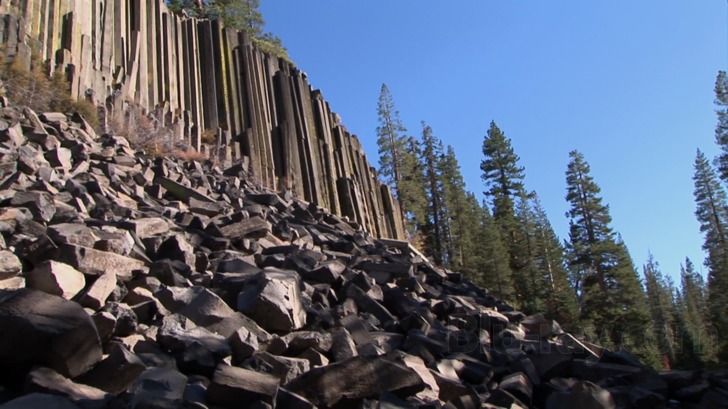
The greatest of the great outdoors.
America's National Treasures is not merely a collection of natural wonders and areas of American and world history significance. The film intermixes the natural world with man's place in it, the history of his cultures, his usage and reshaping of the land, his sharing it with other men and other species, and the good and the bad that came from this intermingling of the world and those who call it home. Each of these twelve films offer viewers, first, virtual video tours of the area in question, followed by in-depth discussions of both the history and culture of the location as well as its scientific and natural details. In this series, all goes hand-in-hand, and each location comes alive with a fascinating collection of details that paint a complete picture of each. Some might find it dry and repetitive, but as the film is geared more at the educational rather than home entertainment markets, one can easily see the benefits the series brings to the table. It's great for detailed information on a particular person, place, or thing, best served in spurts rather than all at once. Of note is that this feature, much like the pair of Africa-related videos recently released by another studio, does recycle footage and commentary from other titles. This is best exemplified in America's National Treasures' "Jewel Cave National Monument" segment which repeats word-for-word the commentary found in The Black Hills and the Badlands, while it also uses some of the same video footage. Still, for the bargain price and the hours of quality instructional material, a little overlap is more a footnote than cause for anger or alarm.
Three films comprise America's National Treasures, and each is divided into several sub-categories. Below is a listing and brief review of each sub-group's contents.
The Legacy of the Great Plains (Disc One):
- Geological Wonders of the Northern Great Plains (28:42): This film begins with a virtual tour of Devil's Tower National Monument, located in Wyoming's northeastern corner. Included is a look at its history, geology, geography, and recreational use. Jewel Cave National Monument, nestled in the Black Hills, is located 23 stories underground and was designated a National Monument in 1908. Viewers are taken down for an up-close look inside and are granted a glimpse into its natural history and man's discovery of it. Lastly, viewers are taken to Agate Fossil Beds National Monument in Nebraska's panhandle. Here, oddly-shaped bluffs define the landscape. Viewers are provided with monument history, on-site fossil finds, local geography and culture, a tour of the visitor center, and more.
- Sioux Indian Wars (26:43): First is Pipestone National Monument, located in Southern Minnesota. The park is home to hard, red quartzite. Included is human history in the area, pipestone carvings, and a look into the area's natural evolution. Little Big Horn National Monument, located in Southern Montana, is home to the gravesite of soldiers perished in the famed battle known as "Custer's Last Stand." The area is also home to fascinating natural history, diverse wildlife, and numerous historical conflicts and massacres.
- The Southern Plains (33:02): The segment opens with a look at the Alibates National Monument, inaccessible to the general public, and which may be found in the Texas panhandle. It's home to colorful flint which helped advance local Native American cultures. Capulin Volcano, located near the famed Santa Fe Trail, was designated a National Monument in 1916. This tree-covered volcano erupted some 60,000 years ago and on the site may be seen three unique types of volcano. Also examined is the area's human geography, the story of the individuals to first oversee the monument, and the discoveries that would reshape human history on the North American continent. Finally, the film examines Fort Union National Monument. This outpost along the Santa Fe Trail is home to olden ruins, including what was at the time the largest hospital west of the Mississippi River. This segment covers human history in the area, the area's scientific and natural specifics, and more.
- Manifest Destiny (27:47): Scott's Bluff National Monument, home to the famed "Chimney Rock," is located along the Oregon Trail. This is the intermixed story of American Westward expansion -- "Manifest Destiny" -- and the natural wonders of the area shaped by the building and weathering of sediments and the area's famed prairies. Homestead National Monument, found in Eastern Nebraska, is home to the first claim of free land under the Homestead Act of 1862. Also examined is the preservation of the area's natural prairie ecosystem, nearby deciduous forests, and the story of the pioneers who crossed this land.
The Historic South (Disc One):
- Civil War & The Confederacy (42:14): The first stop across the South is the George Washington Carver National Monument, situated along the western edge of the Ozarks. This is only one of three monuments dedicated to an individual. Of note is a trail throughout the area Carver called home. This segment shares Carver's personal history, from his childhood spent as an orphan onward through his years as a scientist, educator, inventor, painter, and visionary. Also studied is the natural wonders of the area in which he lived. The film moves east for a sojourn to Fort Sumter National Monument, assigned status as a National Monument in 1948 and found in the Atlantic state of South Carolina. Viewers are provided with a video tour and a sharing of the fort's historical importance. Also studied is the area's natural processes and geographic features. The next stop on the tour is Fort Pulaski National Monument. The original structure was partially designed by a young Robert E. Lee. This piece looks at the fort's important role in national defense, place in Civil War combat, and the salt marshes which may be found around it.
- Prehistoric American Indians (37:34): Poverty Point National Monument is located within the boundaries of the oldest city in North America, a city built by a hunter-gatherer culture which lasted for over 500 years in what is today Louisiana. Viewers are shown artifacts from this civilization and told the story of the peoples who called it home. The film also examines the local geography, where it may be found in a coastal plain. Next is Russell Cave National Monument, dubbed "the most unique archaeological site on the North American continent." Found in Northern Alabama, it was named a National Monument in 1961. This area is home to the-longest recorded continual habitation in the United States. Studied is the cave's geological history and curiosities and man's occupation of it. Ocmulgee National Monument, designated in 1936, is home to a diverse and impressive ecosystem. The area preserves the remnants of a city, thought to be home to 2,000-3,000 ancients. Examined is the surrounding geography and natural wonders as well as the culture of the people who once called it home in the years following 900 AD.
- Slavery & The Plantation System (38:27): This film begins with a journey to Buck Island Reef and Virgin Islands Coral Reef National Monuments, preserving areas of both historical and geographic importance. The film travels under the ocean floor for a closer look at the coral reefs and aquatic species that call it home. The area was also a landing spot for explorer Christopher Columbus in 1493, but the real story of this area is its history of slavery and the slave trade. The piece also examines the area's natural formations, vegetation, wildlife, and geography. Next is George Washington Birthplace National Monument, which preserves the Founding Father's place of birth as well as Chesapeake Bay tidewater land, site of Jamestown colony. The site is now home to a recreated birth site, the original having been destroyed by fire. The film looks at the life of the Revolutionary War general and first American president. Also highlighted are the natural wonders of the surrounding areas.
- Southern Spanish Colonies (37:14): The first stop along the tour of Southern Spanish Colonies are Fort Matanzas and Castillo de San Marcos National Monuments, both declared National Monuments by President Calvin Coolidge. Audiences are provided a virtual tour of both sites, which highlights fort construction material, layout, armaments, local lore, Spanish history around the area, and the natural world that exists around it, namely the Everglades. Next is Fort Frederica National Monument, home to Georgia's founder, James Oglethorpe. The film examines the area as it now is and discusses how it once was. Also featured is the history of the British-Spanish Battle of Bloody Marsh, the area's further history, climate, natural formations, and present-day status.
The Geologic West (Disc Two):
- Fossil Treasures of the Pacific Northwest (37:39): Hagerman Fossil Beds National Monument is home to fossils that prove the existence of roaming horses on the North American continent long before the arrival of Spanish explorers. Declared a National Monument in 1988, the area is home to a unique ecosystem, fish farms, fresh springs, and car-sized boulders. John Day Fossil Beds National Monument is home to ancient fossils, unique formations, and a radically different landscape today than what ancient visitors might have seen long ago. This segment examines the area's ecosystem, history, the diverse and exceptionally well-preserved fossils which may be found in the area, and man's past and present life on the land. Next is a National Monument established in 1972 by President Richard Nixon, Fossil Butte, which is home to the famous "Green River" formation. The area is home to moose, pronghorns, and other diverse wildlife. This film examines in detail the wildlife, the important fossils found around the area, and man's occupation of the land.
- The Pacific Northwest's Ring of Fire (38:23): This segment begins with a tour and history of Pinnacles National Monument, "a place of great surprises." It's home to monoliths and rocky spires, all leftovers of a volcano cluster originally located in what is modern day Los Angeles. Featured is the diverse plant and animal life found in the area, preservation of endangered species, and human habitation of the area. Craters of the Moon National Monument, located in central Idaho, is next. Discussed is the area's volcanic history, its modern landscape, geology, and the negligible human history of the area. Devils Postpile National Monument, within the High Sierras, was named a National Monument in 1911 by President Taft. Explored is that area's volcanic history, the local "Soda Springs," its geologic wonders, and the mysterious human history within the area.
- The Historic Pacific Northwest (38:14): Lava Beds, declared a National Monument in 1925 by President Calvin Coolidge, is "all things volcanic." Highlights of this Northern California natural wonder include unique vocalic formations, lava caves through which tourists may adventure, and ancient pectoglyphs. It is also home to the area on which the Indian Wars were fought, including the Battle of Little Big Horn. Muir Woods National Monument, named for environmental pioneer John Muir, was one of the first areas designated for preservation. It's home to the world's tallest and largest trees, trees which are also highly resistant to insects, decay, and fire. Also featured is a study of the area's preservation. Next is Minidoka Interment National Monument, home of a World War II-era Japanese internment camp. Obviously, the piece focuses heavily on the 1940s incarceration of Japanese-Americans, as well as a look at the natural world around the camp.
- The Great Biodiversity of the Pacific Northwest (33:51): Cabrillo National Monument, found near San Diego, remains an example of Southern California's natural plant community. Examined is man's history of the area, it's natural geographic history, and more. Oregon Caves National Monument, located below an unlogged forest, is home to the Oregon Caves Chateau and, of course, an intricate marble block three-mile cave.
America's National Treasures Blu-ray Movie, Video Quality 

America's National Treasures features a basic high definition image that certainly won't find favor with videophiles but that does suffice for basic classroom use, probably on an older CRT television rolled in front of students on an A/V cart. The image is generally flat with that lifeless HD video sheen. There's not much banding, which has historically been a problem for these Mill Creek Documentaries, but this ones does sport a fair bit of edge enhancement. Black crush, noise, and blockiness are evident in the darker scenes, particularly the underground stretches. Details are soft and not very sharp or true. Rock formations appear far smoother than they should, while natural grasses and leaves appear smeary and not at all very well defined. Colors are acceptable but rather bland and lifeless, though much of the film deals in earthen tones with green vegetation and clothing being the only consistent reprieves from shades of browns and tans. Indeed, this transfer seems geared towards light duty and not home video system-selling arenas, so many of those who use it in its intended role shouldn't be too disappointed with the quality.
America's National Treasures Blu-ray Movie, Audio Quality 
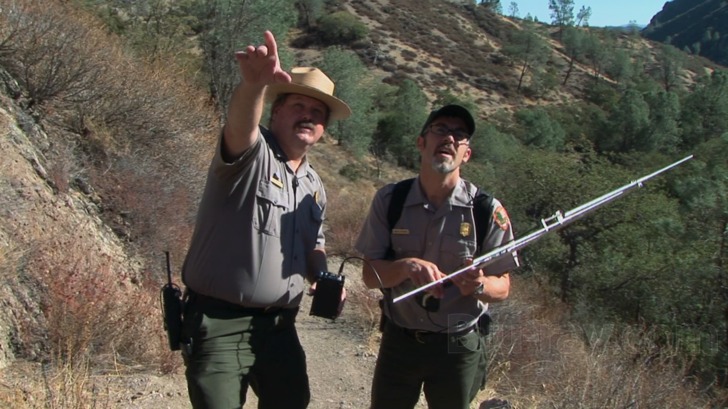
America's National Treasures features a Dolby Digital 2.0 soundtrack. As with the video, this track serves its intended purpose admirably. It will work fine coming from TV speakers but audiophiles need not bother. Narration and dialogue both are boomy and sharp, with an occasional sense of detachment from the proceedings. The track can be a bit hissy at times. Ambient wind noises often compete with dialogue; interviewees on location basically speak into the off-camera microphone, and wind noise was apparently of no concern to the filmmakers. Music is adequately clear and focused straight up the middle, playing as nothing more than a basic supporting element. Light natural ambience floats in from the center, and a fair low end booming sensation is captured with the firing of a cannon. Basically, this track is a generic experience that serves the material well enough, nothing more and nothing less.
America's National Treasures Blu-ray Movie, Special Features and Extras 
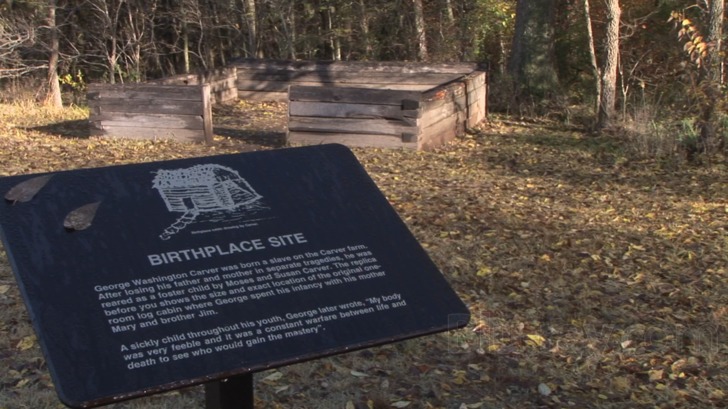
America's National Treasures contains a "ROM portion" that "includes teaching guides, historical documents, links to additional information, and much more." This material must be accessed through a PC with a Blu-ray drive.
America's National Treasures Blu-ray Movie, Overall Score and Recommendation 
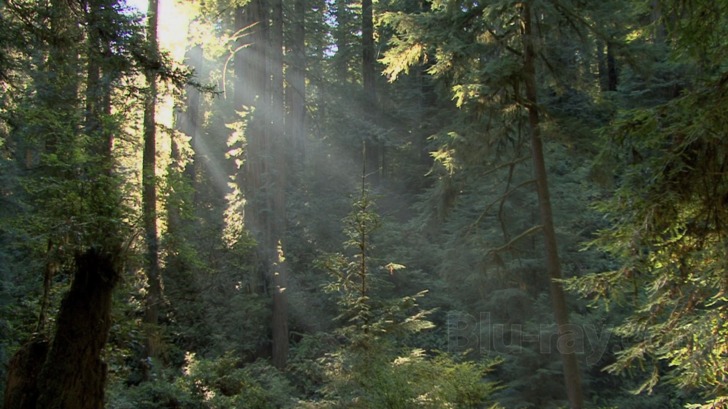
America's National Treasures certainly is not the pinnacle of the history, science, geography, or anthropology documentary, but it's a well-rounded, useful, and nicely-assembled little venture that educators in these fields who cover all or some of the material contained herein will want to have on hand, assuming a Blu-ray player is accessible in the classroom. The picture and sound quality are sufficient, and no extras are included. However, as noted, this set is built for classroom use first and foremost, and it's just fine for that role. Recommended to those in need of classroom videos over these subjects.
Similar titles
Similar titles you might also like

National Parks Exploration Series: Yosemite - The High Sierras
2012

The Ultimate Wave: Tahiti 3D
IMAX
2010

Fascination Coral Reef 3D: Mysterious Worlds Underwater
2013

History of the World in Two Hours 3D
2011

Sea Rex 3D: Journey to a Prehistoric World
2010

Tiny Giants 3D
2014

Life
BBC / Narrated by David Attenborough
2009

Amazing Ocean 3D
2013

Dinosaurs: Giants of Patagonia 3D
IMAX
2007

Under the Sea
IMAX
2009

Deep Sea 3D
IMAX
2006

Wild Ocean
IMAX
2008

Frozen Planet
The Original UK Series
2011

Fascination Coral Reef 3D
2011

Beautiful Planet: France & Italy

Adventures of the Penguin King 3D
2011

IMAX: Hubble 3D
2010

Kingdom of Plants 3D
Kew 3D
2012

Enchanted Kingdom 3D
2013

The Universe in 3D: A Whole New Dimension
2013